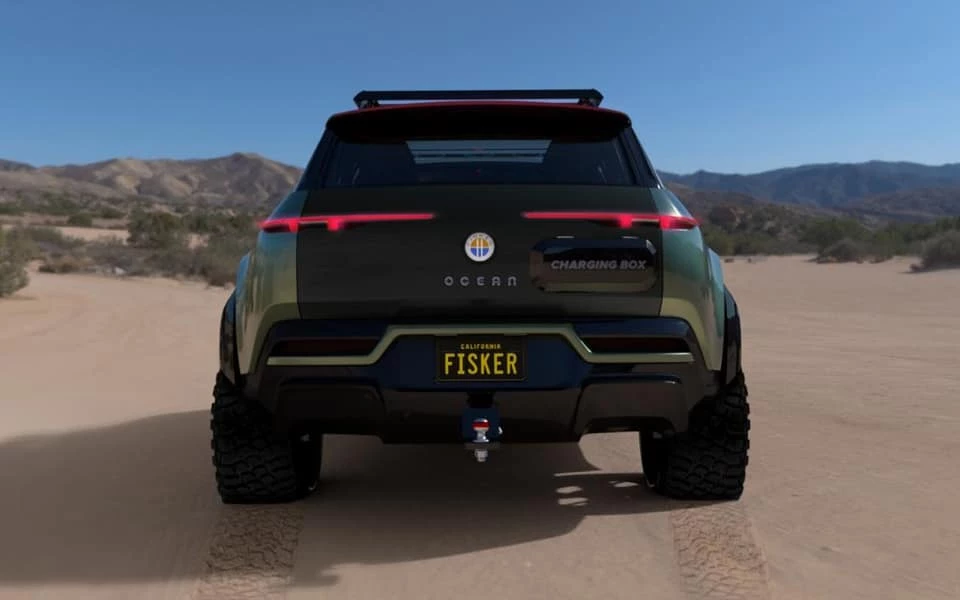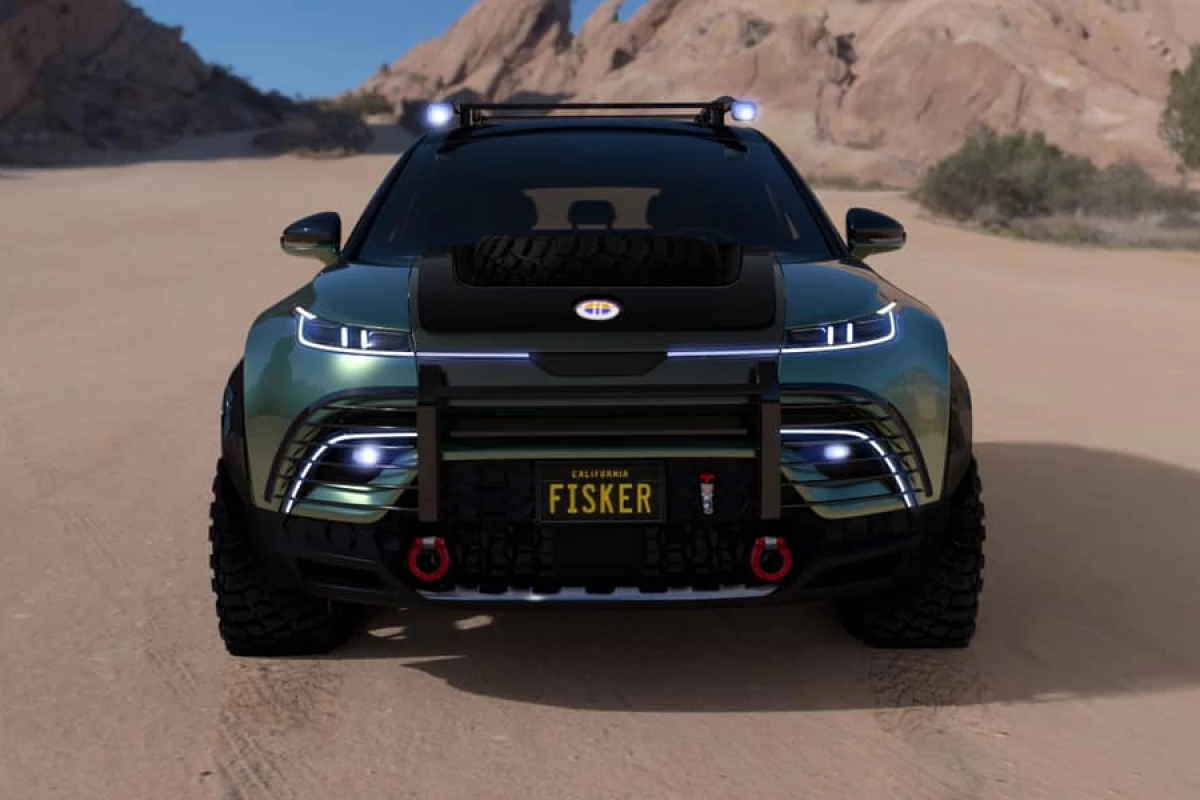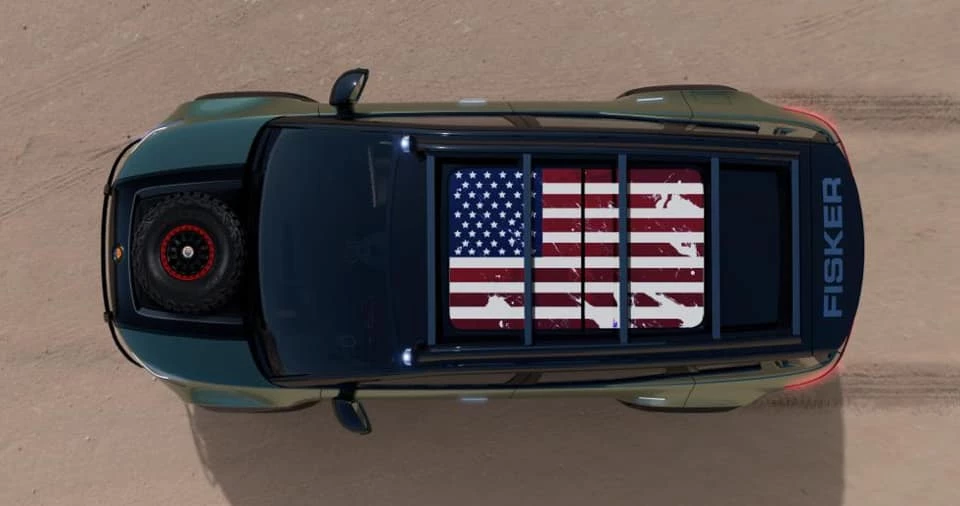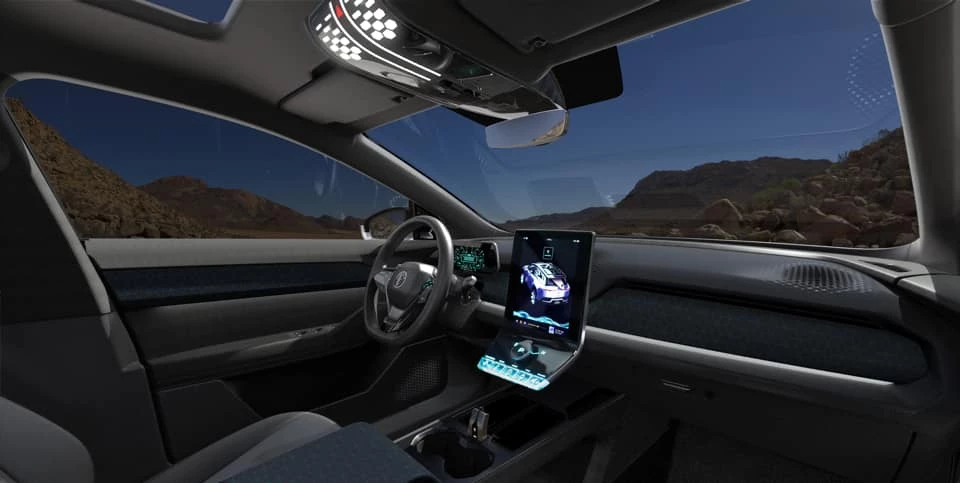The Fisker Ocean only just debuted in January and won't go into production until next year, but Fisker is already giving its SUV its first major upgrade ... in rendered form, anyway. The new Force-E package brings an aggressive, off-road-ready stance to Fisker's electric SUV, previewing a rescue vehicle that could quite easily become another in the growing legion of next-gen electric camper rigs. Not only does the Force-E bring standard off-road upgrades like a lifted suspension and beefy tires, it packs innovations like a hood spare tire holder and integrated fresh water tap. Whether pulling other adventurers out of near-death or setting off on multi-day adventures of its own, the Force-E promises to be the most prepared Ocean on the road and in the wilderness.
When we spoke with Henrik Fisker during the initial design/redesign phase of the EMotion electric sedan, he was quite enthusiastic about the design possibilities invited by decentralized electric powertrain technology. The Force-E shows the latest way Fisker has chosen to explore those possibilities, repurposing the handy but predictable front trunk into a much more dramatic full-size spare tire holder.
The sunk-in, tire-wrapping hood doesn't take up the entire frunk, leaving some leftover space that Fisker uses for an integrated fresh water tank complete with front bumper tap. We can only assume the tap is left open in the rendering for illustrative purposes, with Fisker planning to employ the highest levels of waterproofing and dustproofing to keep it clean from dirt, mud and unclean water, perhaps by simply putting it in a more logical place, like inside the front trunk.

The standard Ocean has some all-weather, all-terrain capability of its own thanks to available all-wheel drive, and the aftermarket E-Force pack multiplies that capability. The kit includes a suspension overhaul with lift, off-road tire and wheel upgrade, front-end and underbody protection, auxiliary front bumper lighting, extra tow hooks and a roof rack with integrated lighting. Also included is a new Defender-like rear toolbox with power outlet.
Fisker has designed the Force-E package with tactical and rescue applications in mind, aiming it at the military, non-governmental organizations, and search and rescue ops, among others. The power box is there to help pull EVs with dead batteries out of the wild, and the fresh water tank to give workers and rescue victims quick access to hydration.
We can't look at the renderings and feature set without imagining an Ocean off-road camper. Throw a roof-top tent on that overland-style roof rack, and you have an agile, little off-road camper complete with its own water supply. Depending upon what types of outlets the power box holds, campers could easily power up campsite accessories like fridge/freezers, entertainment equipment and blenders. Fisker plans a full-length solar roof on the Ocean, but the roof rack and tent might make a separate fold-out panel option a better fit for a Force-E camper car.

The Ocean's 250- to 300-mile (400- to 483-km) range is a bit limited for extended off-road expeditions, but the Ocean Force-E could prove an interesting option for shorter camping trips to organized campgrounds or backcountry spots. For longer trips, it might have trouble competing with future options like the top-tier 500-mile (800-km) Cybertruck camper with solar tonneau or flagship 400-mile (644-km) Rivian R1T overlander. The artists formerly known as Fisker over at Karma also have their own ideas of what the electrified camper van of the future might look like.
Fisker didn't hint at what pricing when it announced the E-Force this month, but we do know the Ocean itself will start at US$37,499. Fisker plans to announce more details about manufacturing plans in the third quarter of this year, followed in Q4 by specifics about the four Ocean packages. An actual Force-E prototype will debut in 2021, and plans call for Ocean production to begin in late 2021.
Source: Fisker Inc






